A Fully Integrated Approach from Design to Weaving
Brings to Life the Distinctive World of
Obiya Susumatsu
With over 170 years of history in Kyoto’s Nishijin district, "Obiya Susumatsu" is a renowned weaving house specializing in obi. Their distinctive world of beauty is shaped by originality in design and color, supported by a passionate team of artisans who handle every stage of production—from creating intricate patterns to dyeing yarn and weaving on the loom. In this feature, we explore how tradition and innovation harmonize in their bold and artistic approach to obi-making.
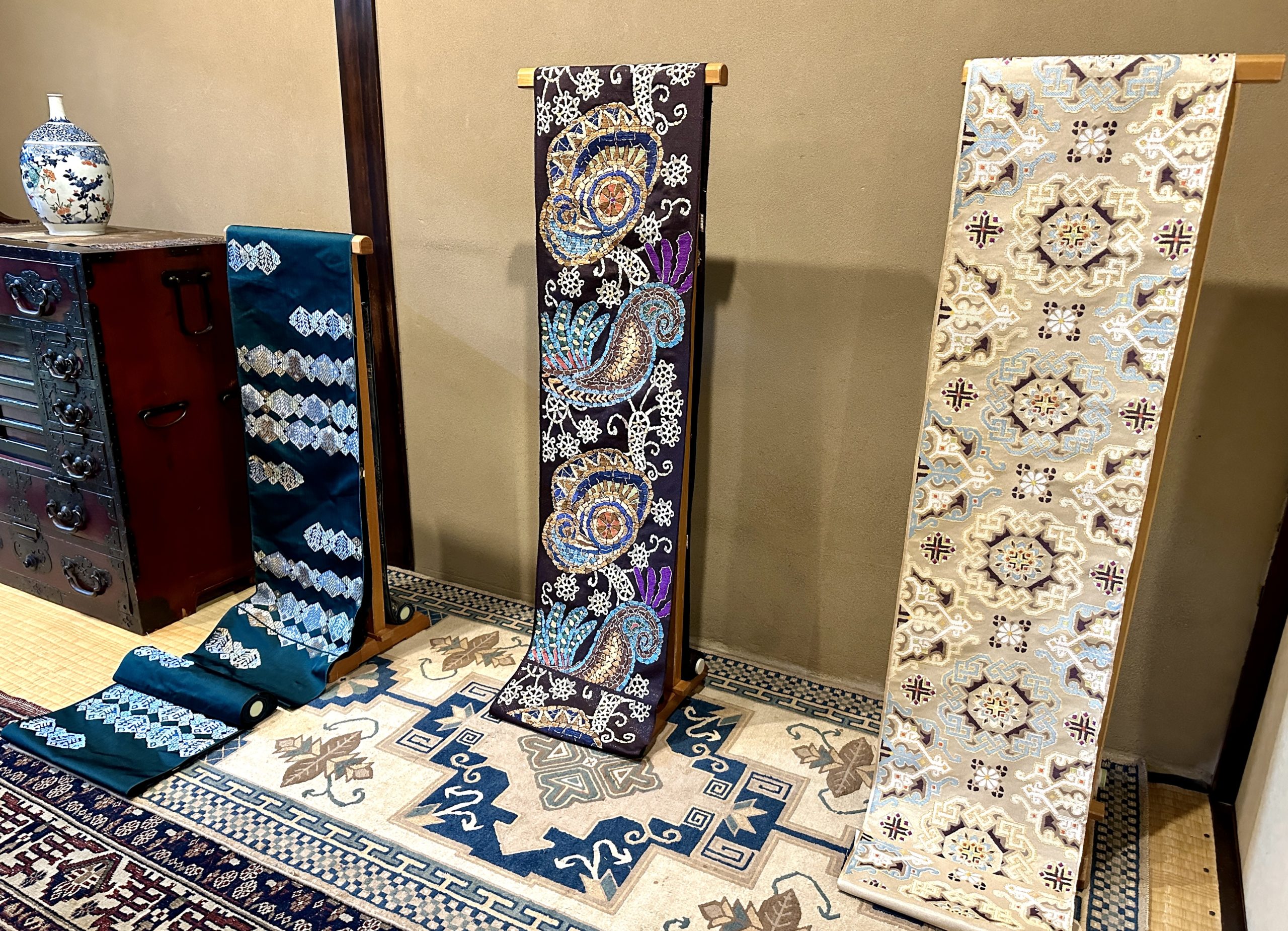
In This Article:
・The history and founding vision of Susumatsu.
・A fully integrated production system from design to weaving.
・Unique sense of color and advanced color arrangement techniques.
・A commitment to innovation while honoring tradition.
Located in Kyoto’s Nishijin district, Susumatsu has been dedicated exclusively to obi-making for over 170 years. Known for their exceptional aesthetic sensibility and creative flair in both design and color, they continue to captivate kimono connoisseurs with their distinctive creations. The enduring appeal of Susumatsu lies in its delicate balance of tradition and innovation. We spoke with Mr. Hiroyuki Kimura, the seventh-generation president who upholds the philosophy of “never compromising on craftsmanship,” and his wife, Ms. Yoko Kimura, who leads the artistic direction of the designs.
A Fateful Encounter
with a Master Designer
The name “Susumatsu” is striking—once heard, it’s not easily forgotten. It was in fact the name of Mr. Kimura’s great-grandfather, and the original name of the business was "Kimura Sute-Orimonojo". At the time, the workshop specialized in mass-producing everyday obi. However, after World War II, Japan saw a sharp decline in kimono-wearing culture, and the company’s fortunes began to waver. In 1960, the year Mr. Hiroyuki Kimura was born, his father, Mr. Yajiro Kimura, made a bold decision: he sought out the renowned master designer Mr. Yoshizo Tokuda and asked to become his apprentice.
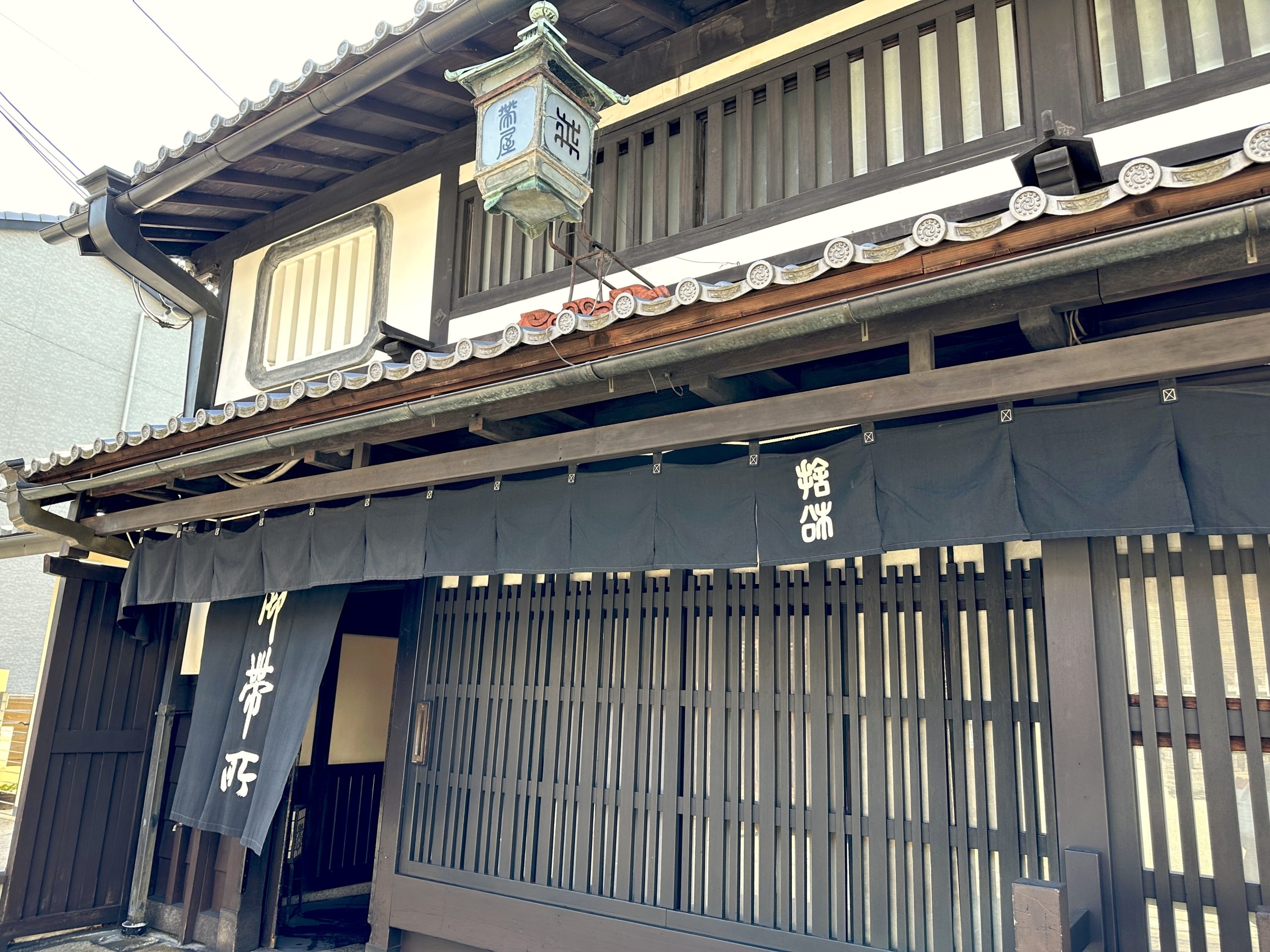
Mr. Tokuda was a legendary figure who shook up the world of Nishijin weaving—a realm that traditionally valued continuity over individual expression. A true genius, he created avant-garde, artistic designs unlike anything seen before in obi. His works were so sought after that wholesalers eagerly competed to acquire them. That Mr. Yajiro Kimura was able to study under such a renowned master suggests he must have possessed exceptional artistic talent and sensitivity.
“Actually,” Mr. Kimura laughs, “my father once told me he hardly understood Mr. Tokuda’s teachings at first and was constantly scolded. I even heard he once used a design in reverse by mistake.” Despite the struggle, his father was earnest and deeply devoted to learning. He would visit art museums, study design books, and spend every spare moment absorbing knowledge. After finishing work, he would head straight to Mr. Tokuda’s atelier, often staying until late into the night—for fifteen years, without a single day off. He used to say "I would sometimes nap in the restroom.”
Such was the dedication Mr. Yajiro poured into preserving the family’s craft. Eventually, Mr. Tokuda advised him to shift the company’s focus “from quantity to quality”—a turning point in the history of Obi-ya Susumatsu. The number of looms, once at 250, was drastically reduced to just 80. This was because only a handful of weavers could bring Mr. Tokuda’s complex, art-like designs to life. Though they faced many hardships balancing such high ideals with reality, they held fast to their pride and commitment to beauty. It was also Mr. Tokuda who gave the weaving house its current name:Susumatsu.
Designing and Weaving in Perfect Harmony
The Signature Strength of Susumatsu
At Susumatsu, every design is created in-house. More remarkably, the person who draws the design is also responsible for selecting the thread colors—and even for weaving the obi themselves. This rare practice has been upheld since the days of working under Mr. Tokuda and remains a defining tradition of the weaving house today. Because the designer possesses deep knowledge of both thread and weaving techniques, they can envision how the final piece will turn out from the very first sketch. This allows for an exceptionally high level of precision, even at the conceptual stage. In essence, the person who initiates the design is also the one who oversees its entire journey to completion. This ability to fully produce a work from concept to finished product is what gives Susumatsu its creative strength. New employees undergo comprehensive training that includes not only drawing but also hands-on instruction in weaving. Through this integrated learning process, they deepen their understanding of both artistic expression and technical craftsmanship, carrying forward the weaving house’s holistic approach to obi-making.
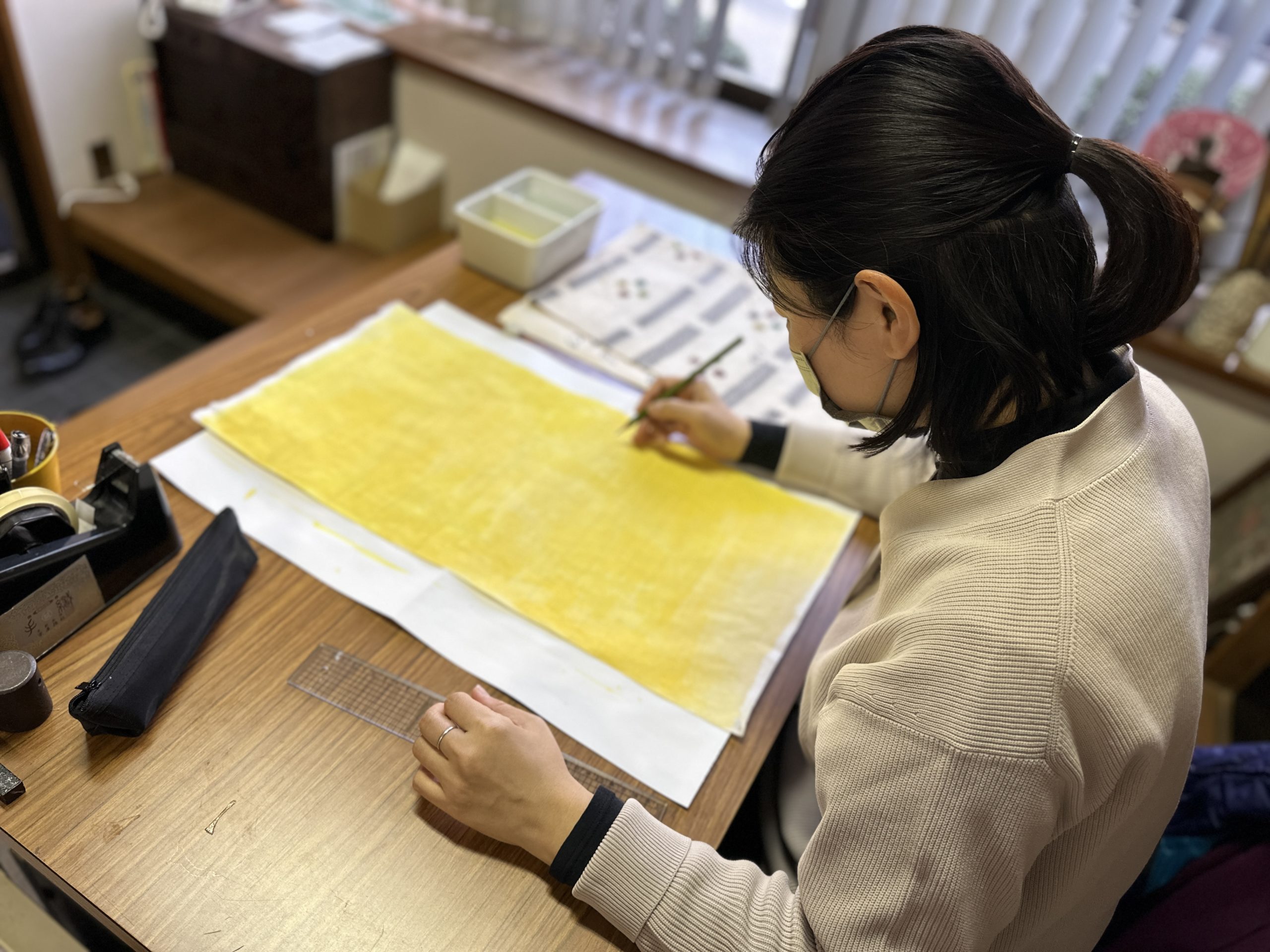
At the creative core of Susumatsu lies its treasured library—an archive that fuels the creative spirit of the weaving house. Carefully curated by Mr. Yajiro, it holds a wide array of resources: not only traditional Japanese books but also art monographs, interior design magazines, and textile publications from around the world. Among the shelves are vintage European fashion journals that evoke the aesthetic sensibilities of past eras. These materials serve as constant sources of inspiration, offering fresh perspectives and sparking ideas that transcend time and geography.
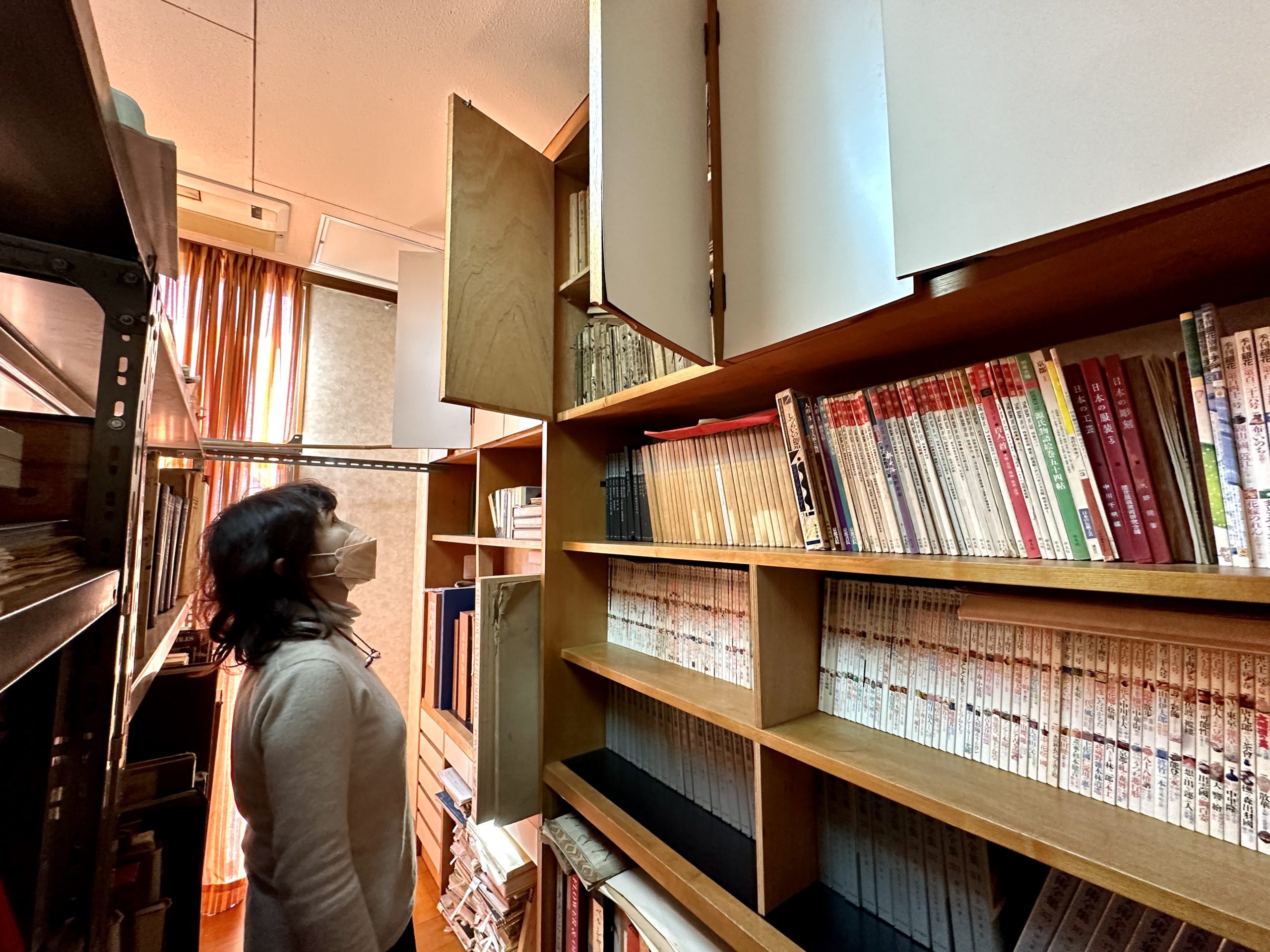
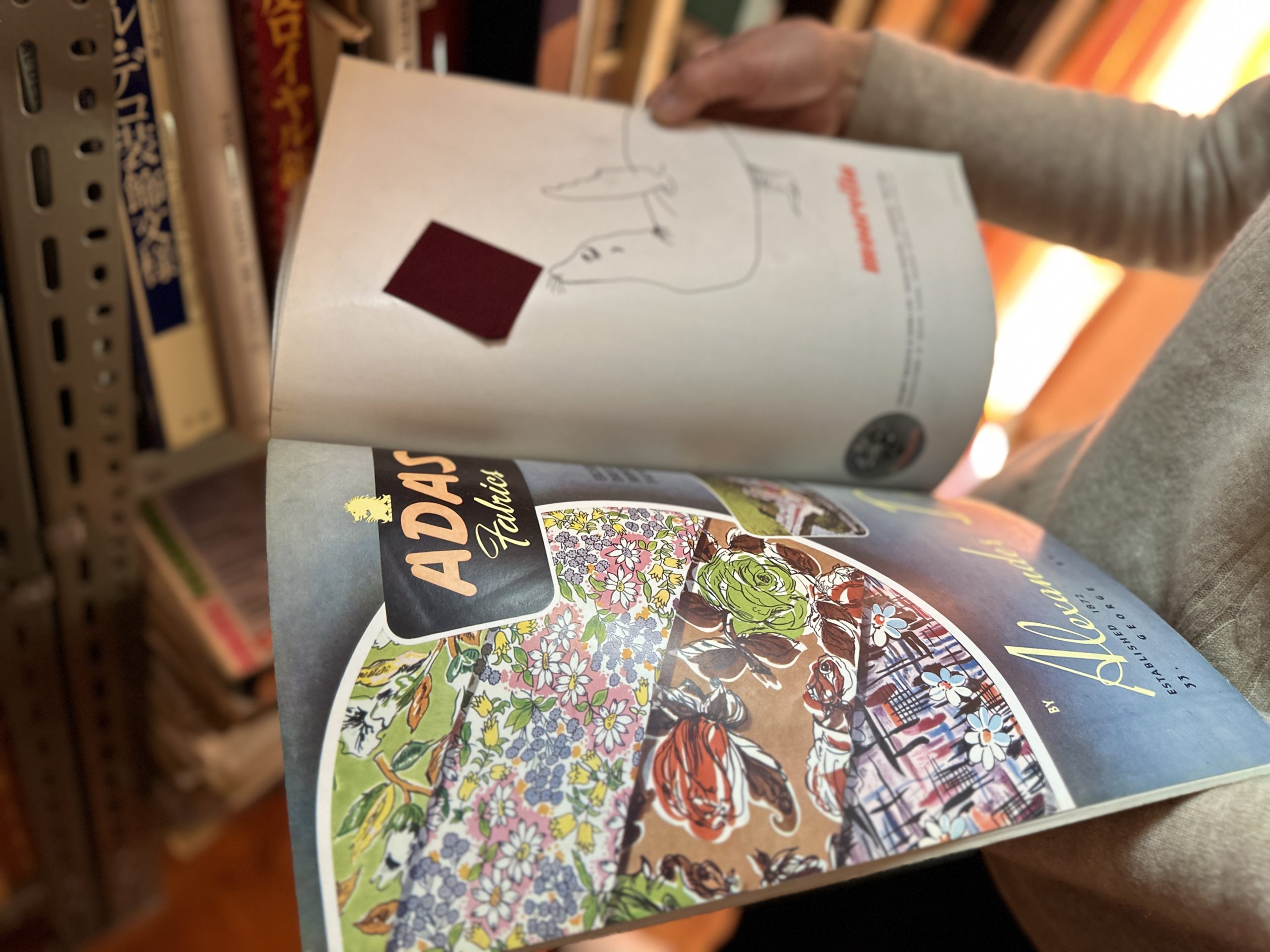
The design philosophy inherited from Mr. Tokuda lives on. Ms. Yoko, who learned directly from her father-in-law Mr. Yajiro, recalls his advice:
“Don’t draw too neatly.”
He believed that hand-drawn imperfections—off-balance shapes, slight distortions—bring warmth and character to the design.She explores various methods depending on the desired expression: drawing on glass or washi paper, using crayons, or cutting stencils to apply color like bingata or Edo-komon techniques.
These approaches allow for textures like smudging or gradation, creating softness in the finished piece.
She has even carved woodblocks with engraving tools, always guided by the question: What method brings me closest to the obi I envision?
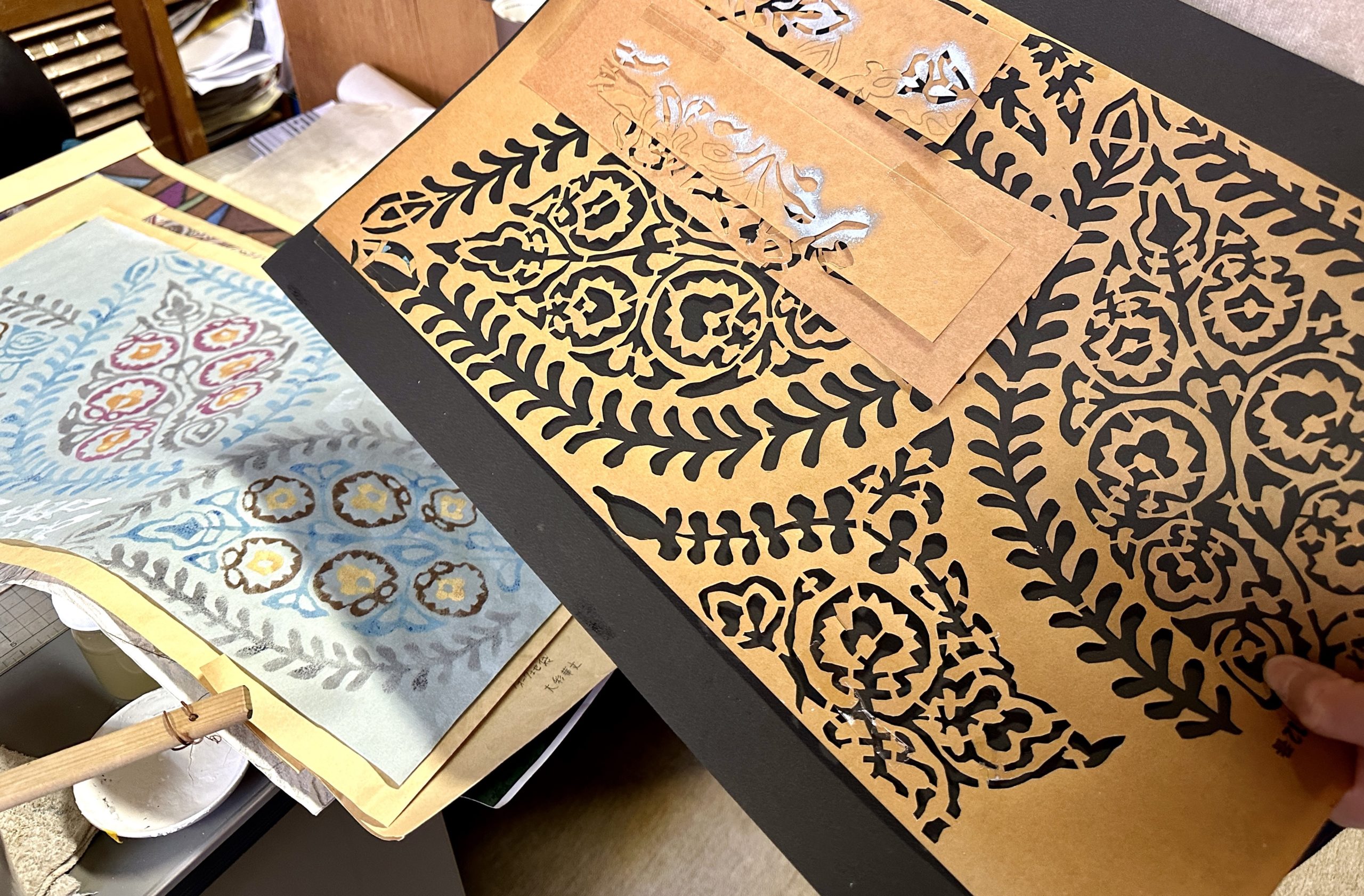
This particular design is a labor of love, created by Ms. Yoko over the course of three months. Just the background alone—layering sepia tones over a base of gold—took several weeks to complete. From there, the composition gradually unfolded into delicate renderings of flowers and birds, each stroke revealing her quiet determination and artistic soul.
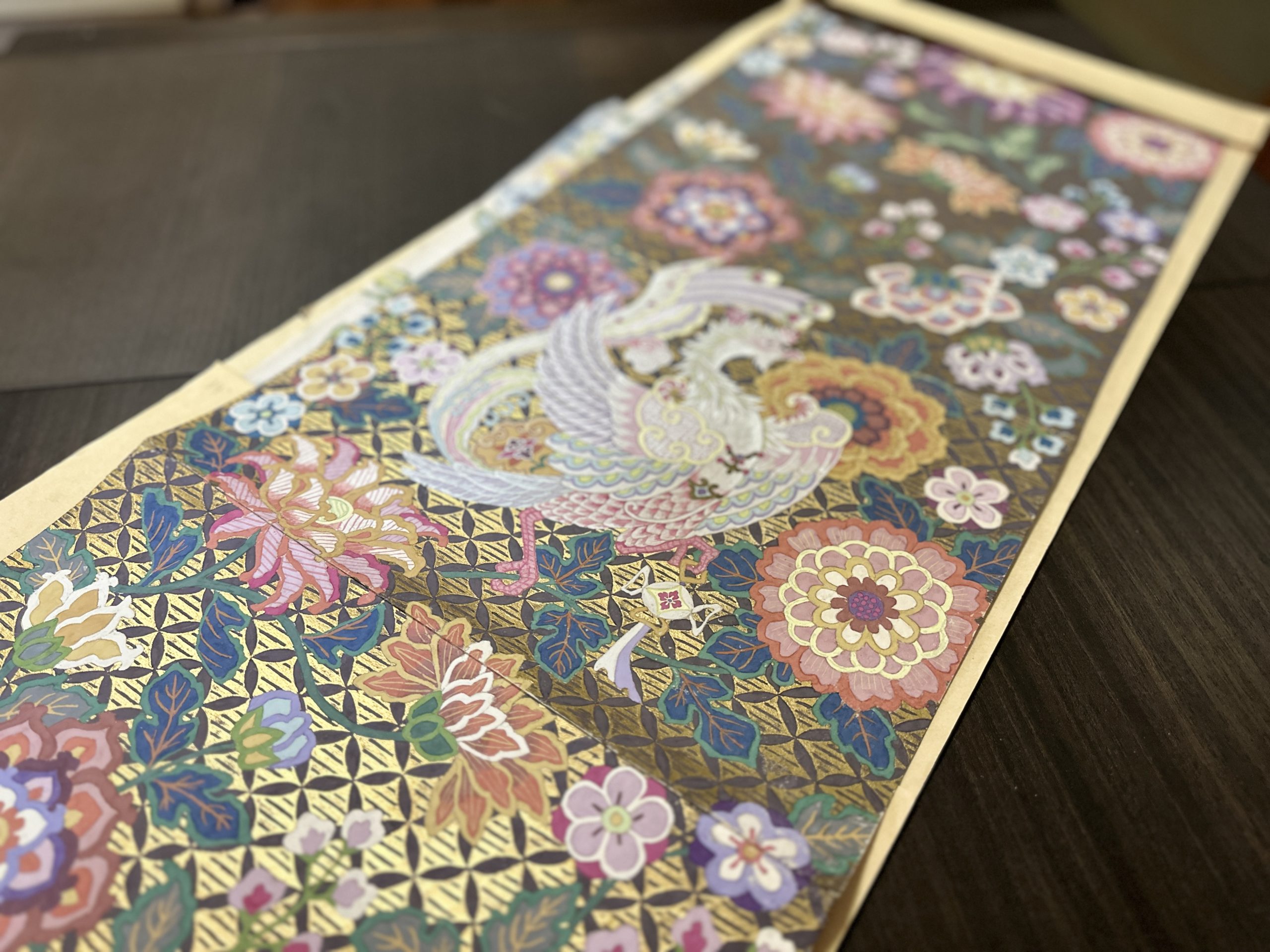
“I adjusted the composition as I went, adding elements to ensure a balanced flow between the birds and flowers,” says Ms. Yoko. “I also selected the thread colors—about a hundred in total. The design is incredibly intricate, but because I understand the limitations and possibilities of weaving, the final obi turned out just as I envisioned it.”
One of her most striking recent works (as of 2023), "Mosaic Bird", was created without a preliminary sketch. Instead, she cut and arranged colored paper by hand, like a collage, directly shaping the design as she envisioned it. The final fukuro-obi incorporates tsumugi silk threads and fine metallic foil (koma-haku), capturing even the torn-paper texture of the original concept in woven form. A stunning fusion of spontaneity and control, it is a true testament to her artistry.
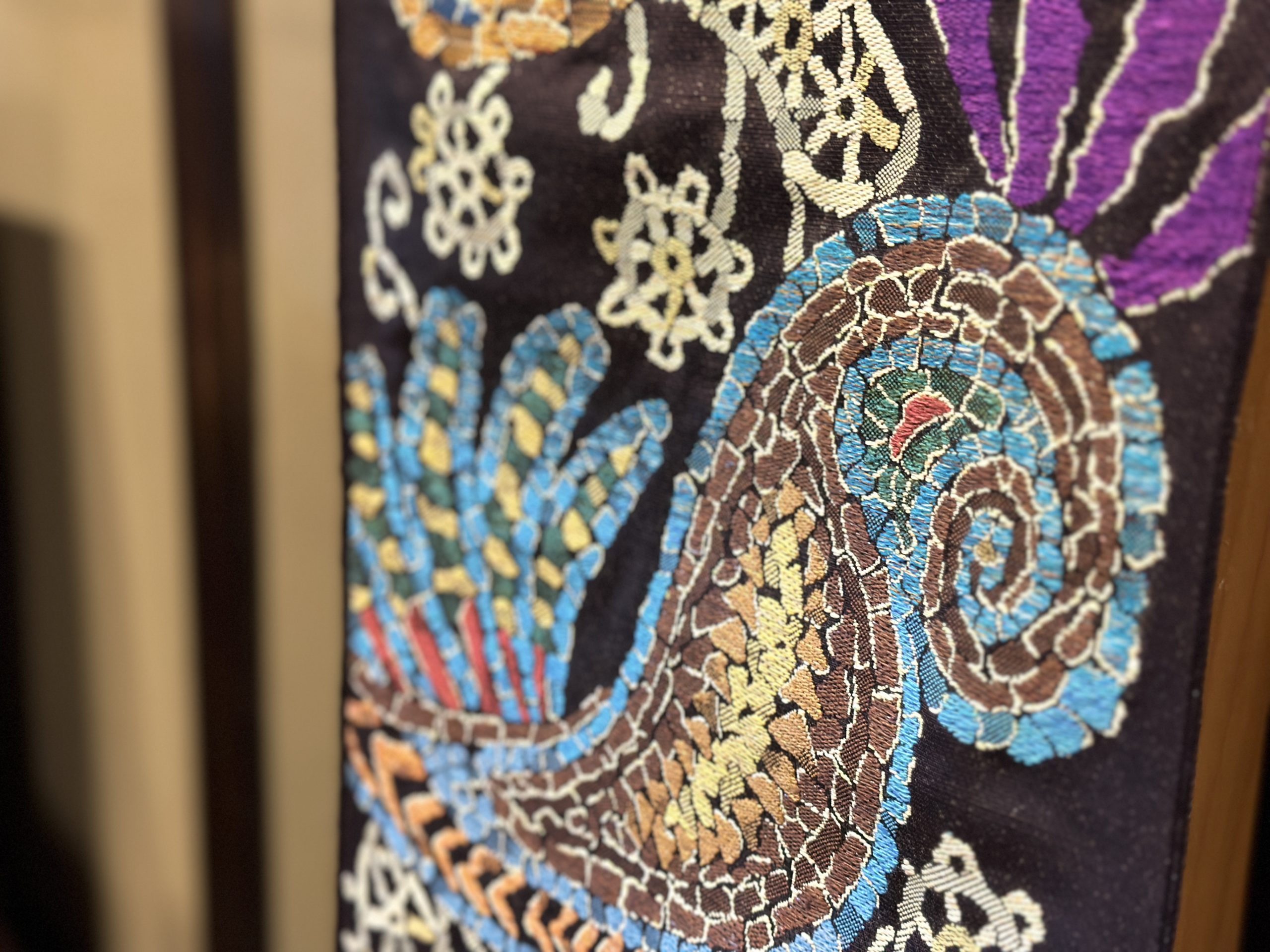
A Masterclass in Color:
Creating Depth Through Thread Composition
Once a design is complete, the next step is selecting the thread colors—a process as intricate as the artwork itself. One of Sutematsu’s defining features is the sheer number of colors used in a single obi. Threads of different hues and finishes—including metallic gold—are combined, often four or five at a time, to form a single perceived color. The resulting depth and nuance are carefully calculated to reflect the tones originally envisioned in the design. In some cases, as many as 200 different threads have been used in one obi. What sets Sutematsu apart is not just the vibrancy, but a unique aesthetic philosophy inherited from Mr. Tokuda—what they call “subdued brightness.” By layering vivid colors with more muted or earthy tones, the final composition achieves both richness and restraint. This deliberate tension between brilliance and subtlety is what gives Sutematsu’s obi their unmistakable visual depth and elegance.
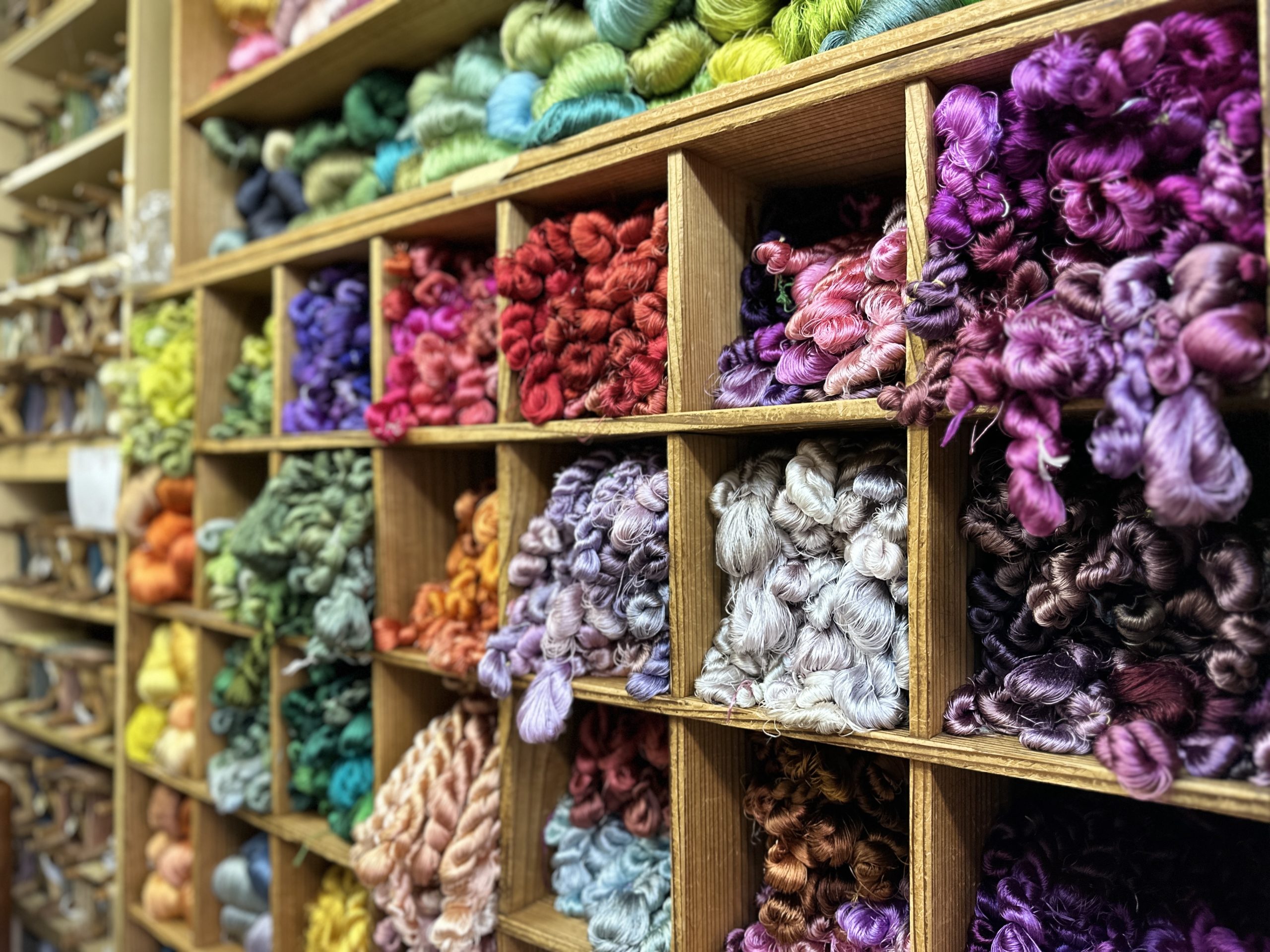
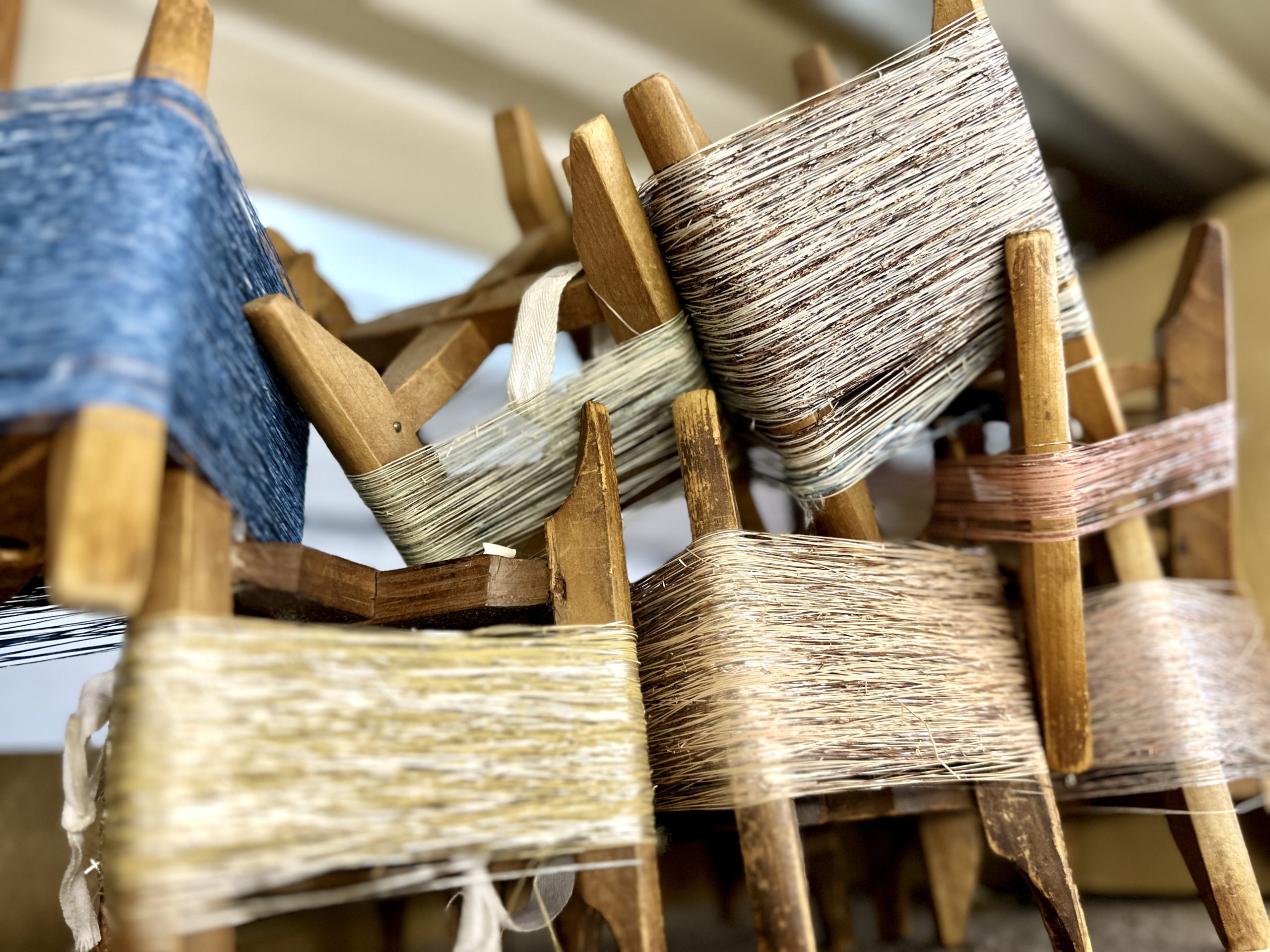
“As with the treasures of the Shōsō-in,” says Mr. Kimura, “many were originally crafted in vivid, brilliant colors. Over time, however, the pigments faded, peeled, and transformed—leaving behind a more subdued, yet profoundly moving beauty.” He explains that Sutematsu’s obis are not intended to reproduce the look of aged artifacts directly, as doing so might evoke a sense of gloom. “Instead, we start from the premise that underneath those gentle tones once lay vivid colors. Our aim is to express that hidden brilliance—woven subtly into the fabric—so that within the muted palette, a quiet radiance still shines through.”
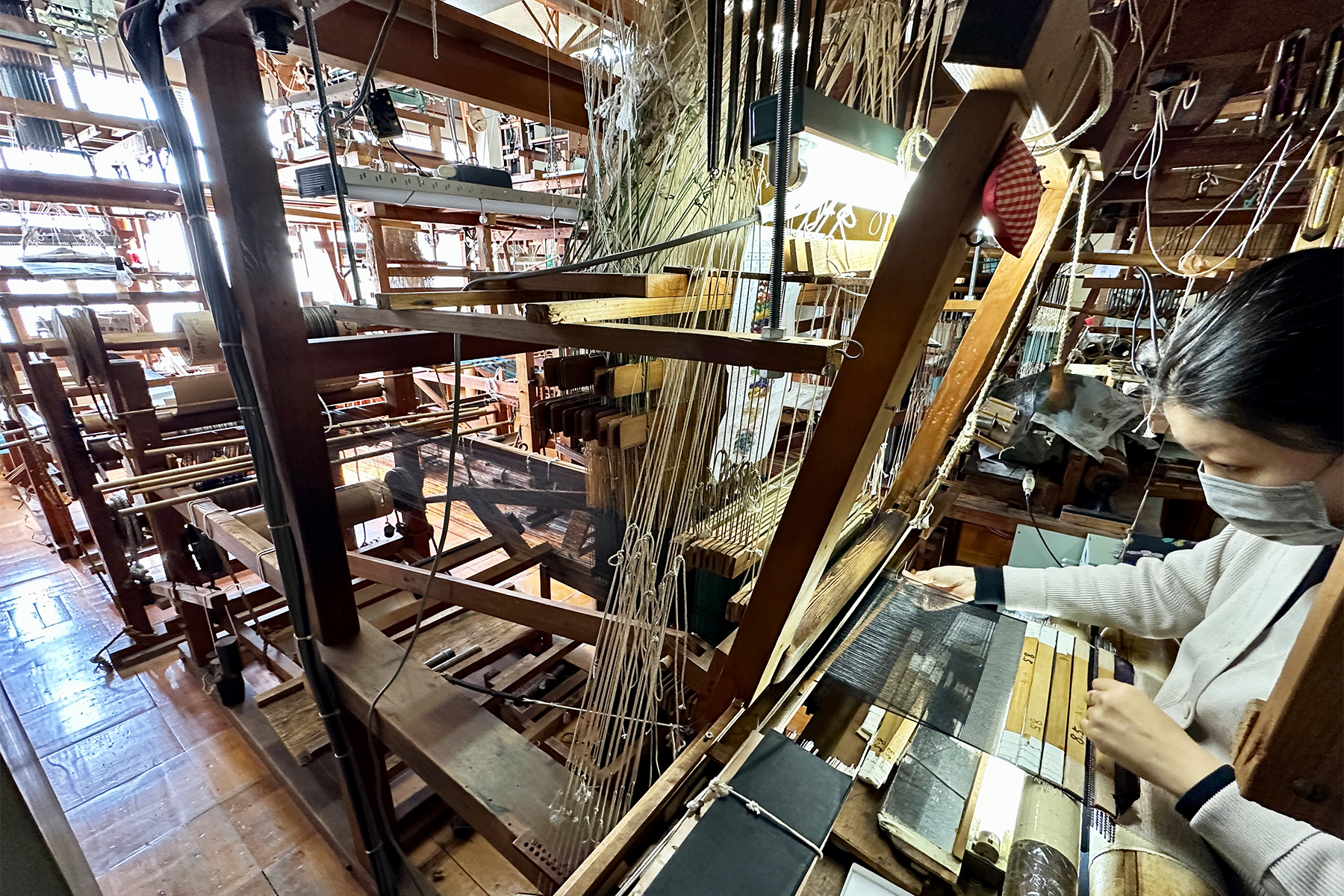
“My father-in-law used to say, ‘Add a touch of poison into the subdued,’” recalls Ms. Kimura. “For example, we might weave a single green or blue thread into a largely sepia-toned background. That one unexpected color can instantly transform the impression of the whole piece. Once woven, the colorful thread peeks through ever so slightly—what seems monochrome at first glance gains remarkable depth through the presence of just one thread.” At Obi-ya Sutematsu, the team sometimes dyes the threads themselves. “Even after dyeing, we may layer on additional colors by hand,” she explains. “It’s all in the pursuit of getting as close as possible to the ideal shade we envision.”
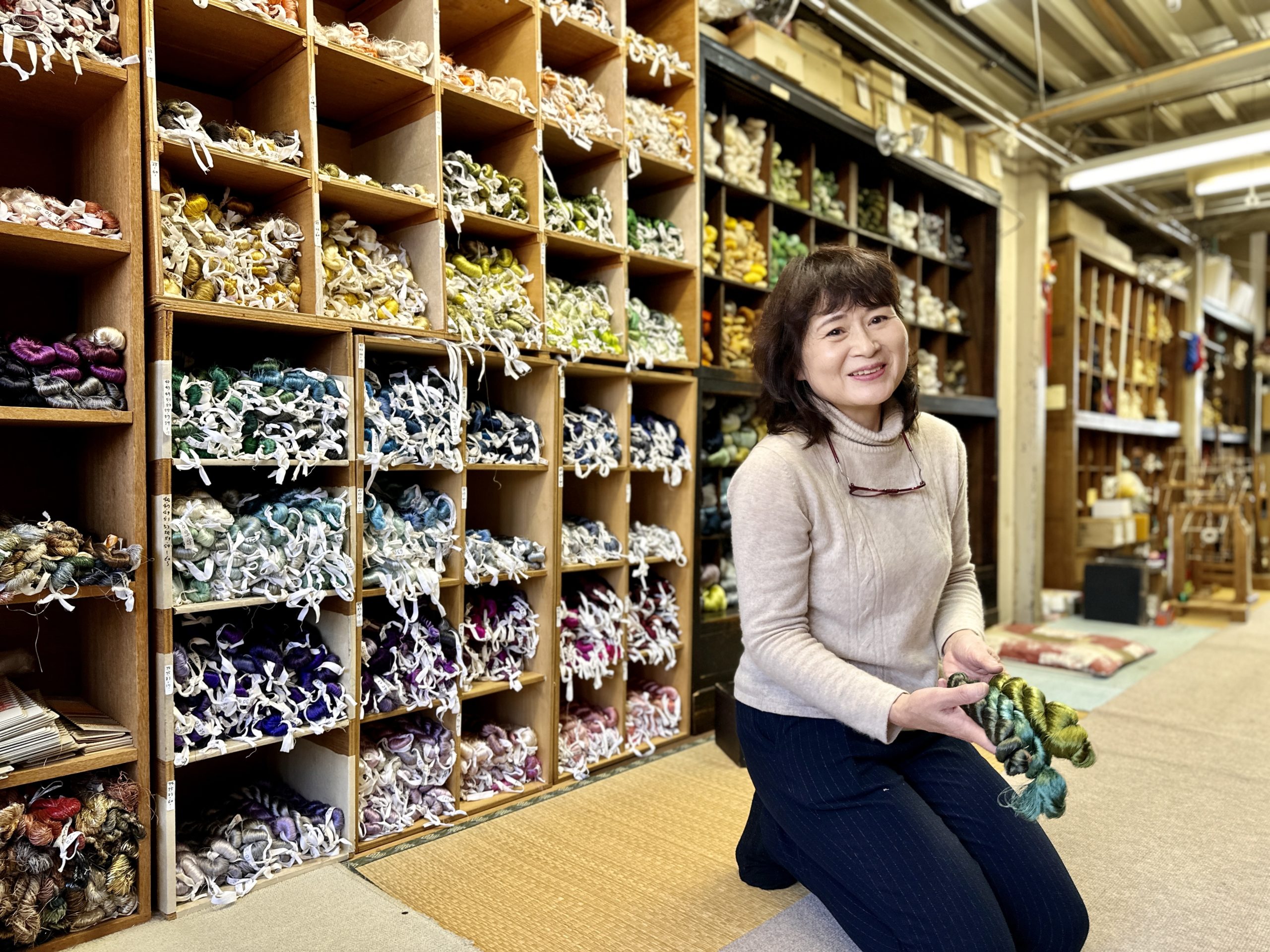
試し織りを何度もし、一色でも「違う」と感じたら、配色をすべて最初からやり直す。一色だけ変えたのでは、全体のバランスが崩れてしまうから。労力をいとわず、妥協は一切しない。すべては、「いかに良い帯を創るか」ということに尽きるといいます。
A Vow to Carry Sutematsu into the Future
The impact of the COVID-19 pandemic extended far beyond Nishijin, disrupting the very foundations of kimono and obi production. Materials became scarce. Skilled artisans disappeared. Many faced the harsh reality of wanting to create—but lacking the means to do so.Yet Mr. Kimura reflects on this era with surprising resolve “COVID actually became a turning point,” he says.
“In times like these, I’ve come to believe more strongly that we must commit ourselves fully to deeply refined craftsmanship. If that still doesn’t work, then so be it—but unless we face this challenge with that level of conviction, we won’t survive. There is no future in compromise.” Much like his father before him—who boldly revived Sutematsu in a time of great uncertainty—Mr. Kimura, now the seventh-generation head, has laid out a clear vision for the future.
What makes Sutematsu’s obi so emotionally resonant? It is the unshakable pursuit of excellence, the refusal to cut corners, and the creation of an imaginative, painstakingly crafted world that stirs the soul.
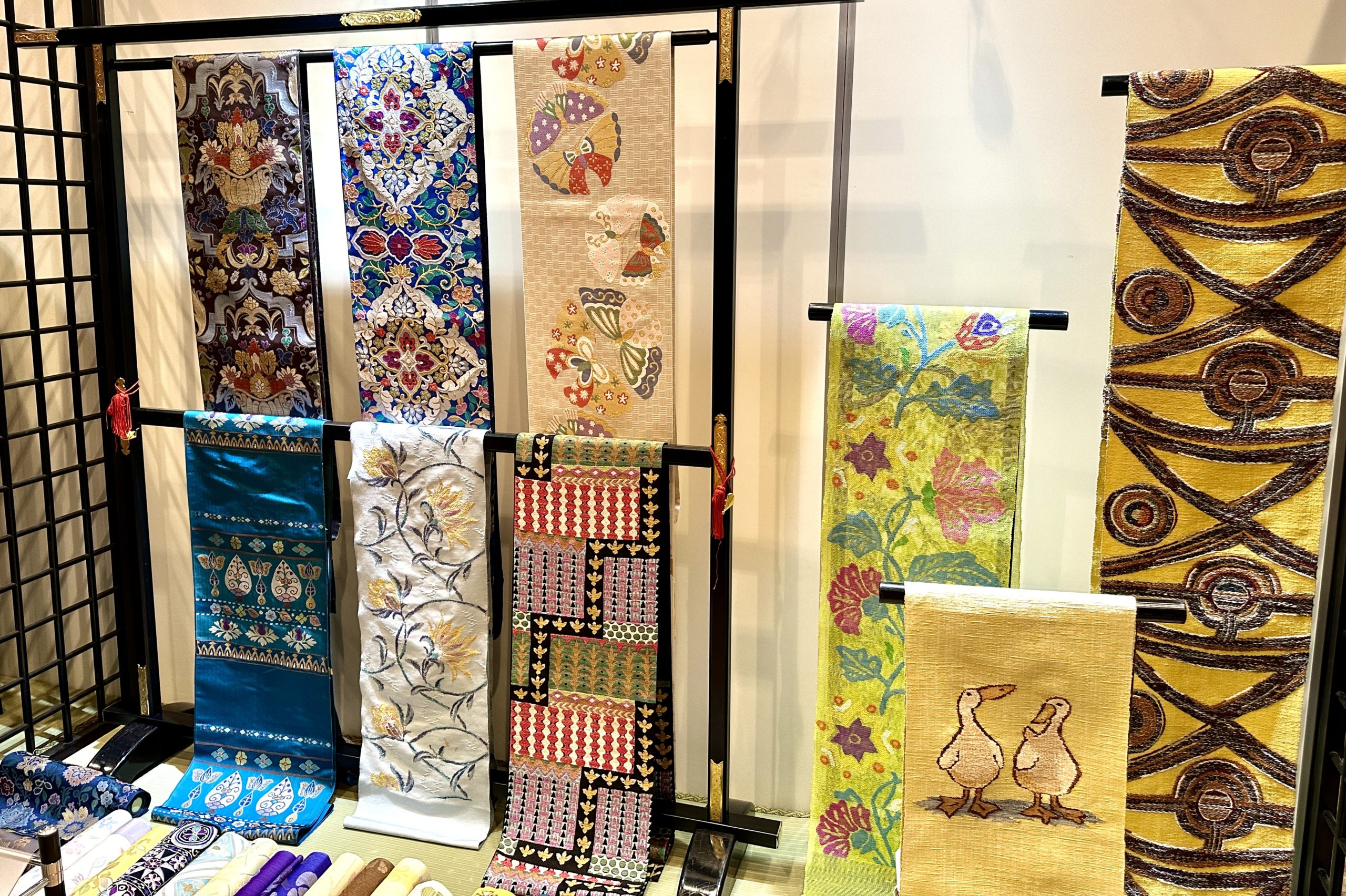
See Also: The Textile Encyclopedia | Nishijin-ori (Kyoto)”
_________________________________________
Obiya Sutematsu
609 Masuya-cho, Sasaya-cho-dori Omiya Nishi-iru, Kamigyo-ku, Kyoto
Official Website>>
_________________________________________



















